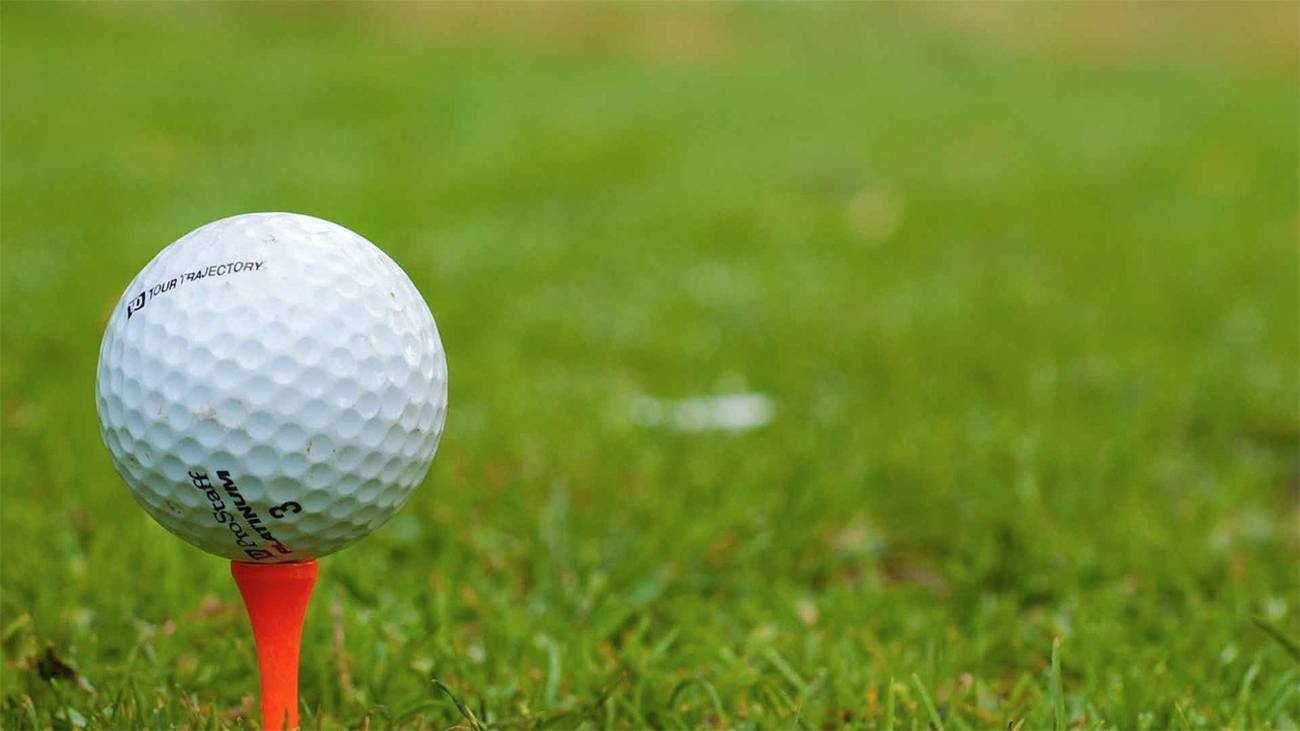As simple as the concept of teeing a ball is, doing it incorrectly can have a significant impact on the output of your shot. Golf clubs have different sized clubheads, faces and not to mention varying degrees of loft. These factors dictate how much elevation is required when teeing up the ball. In this article, we’ll be exploring how high you should tee a golf ball for a variety of clubs.
Teeing a Driver Shot
These days, drivers have massive club heads. The size of them aims to create a high launch with low spin rates. That said, if the ball strikes the clubface too low, it can mean lots of spin and barely any launch. As a general rule of thumb, around half the ball should sit above your club face. This height should allow you to strike the ball as your club is moving upwards through the arc.
 The image above shows a well teed-up ball for a driver shot, notice roughly 50 percent of the ball sits above the clubs face.
The image above shows a well teed-up ball for a driver shot, notice roughly 50 percent of the ball sits above the clubs face.
Teeing Other Club Shots
Although drivers are most commonly associated with tee shots, being able to play good tee shots with irons, hybrids and fairway woods is also essential. Shorter holes or those with a narrow landing area often make more sense to use, for example, an iron rather than a driver.
- Fairway Woods: half an inch of the tee on show
- Hybrid: half an inch of the tee on show (some may find a little less more comfortable)
- Irons 3-6: a quarter of an inch of the tee on show
- Irons 7-Wedges: gradually shorten the tee from a quarter inch each club you move up.
These are general guidelines, some of you may prefer not to tee the ball as your clubs gain more loft. That said, it’s an excellent way to promote consistency as through teeing the ball you guarantee your lie. It’s also worth noting that studies have shown tee shots increase carry distances compared to those played off the floor.
Why do Drivers Need the Most Tee Height?
One of the most crucial differences between drivers and other clubs is the amount of loft. Irons require much less elevation from tee shots when compared to drivers. This is due to the fact they have much more loft. Although you’re still letting the tee do some of the work, you’re effectively allowing the irons clubface to take over in launching your ball upwards.
To illustrate the difference between drivers and irons in terms of loft, drivers often have 10.5 degrees of loft compared to a five iron which typically has between 28 and 32 degrees of loft.
